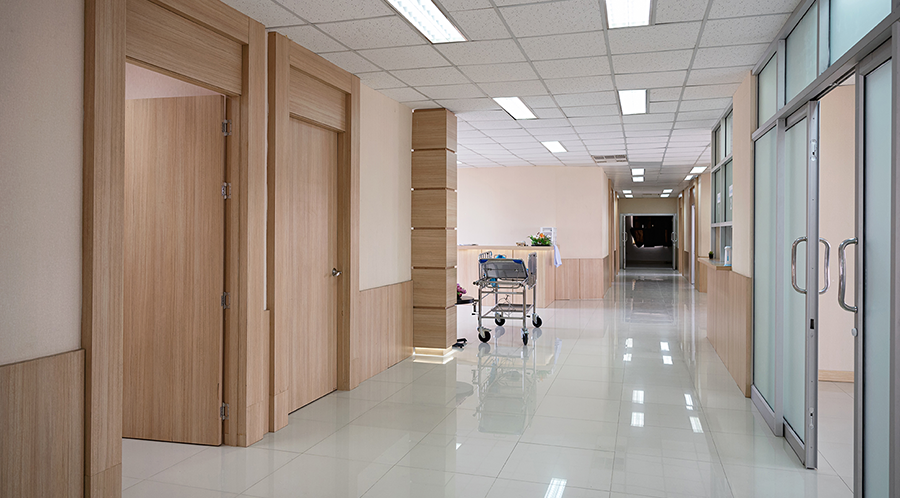With the autumn season in full swing, many people are starting to reflect on 2023 and what is expected to come in 2024. In healthcare facilities, advancements in technology, sustainability and the patient experience are all things that facilities managers and designers are taking into consideration as they enter the new year. Healthcare Facilities Today recently spoke with Matthew Griffith, Vice President, Director of Healthcare at Barge Design Solutions about how designers are becoming more flexible in order to accommodate new trends.
HFT: What recent advancements in healthcare technology have influenced facility design, and how are they being incorporated into new projects?
Matthew Griffith: Less invasive and even robotic applications are becoming increasingly prevalent across a broader range of procedures. These advances are driving a need and creating demand for more flexibility within surgical spaces where imaging modalities are increasingly more integrated. With the ongoing growth in expertise and success rates, the industry is witnessing payer models responding by providing support for the rising levels of case complexity, even in outpatient settings. Facility design is adapting to both the Acute and Ambulatory markets, incorporating technologies in robotics and imaging within surgical suites.
HFT: How are healthcare facilities adapting to the evolving needs of patients, staff, and technology in terms of layout and design?
Griffith: Over the last several years, there have been significant disruptors in healthcare design, ranging from emerging technologies to the pandemic. As a result, there has been an increasing awareness of both Patient and staff needs. For patients, the expectation of a more 'hospitality feel' in facilities has driven a change in how the design is being realized. Technology is now ubiquitous and simply the expectation now. For staff, healthcare facilities are grappling with recruitment and retention pressures, which are driving the need for additional staff amenities such as 'off-stage' areas for collaboration and relaxation.
HFT: What sustainable design practices and eco-friendly features are becoming more prevalent in healthcare facility design to reduce environmental impact?
Griffith: Hospitals account for approximately 10 percent of all carbon emissions, so sustainability remains crucial for hospital owners. Some examples of sustainable features include CO2 monitoring and energy harvesting, such as converting steam waste into a reusable resource. Specifying eco-friendly furniture and finishes to avoid urea-formaldehyde, VOCs, and heavy metals remains the norm when designing interior spaces. Other common interior-friendly designs include stain-resistant chemicals and additional microbial treatments for surfaces in healthcare settings. Energy-efficient LED lighting and high-performance building envelopes (walls and roofs) are also becoming the norm in hospital design.
HFT: With the shift towards telemedicine and remote healthcare, how is healthcare facility design evolving to accommodate these new modes of care delivery?
Griffith: With the advent of more remote and telehealth visits, facility designs have not undergone significant changes from the pre-pandemic state. Many procedures and examinations still require specialized equipment and staff. However, certain modalities, like behavioral health and low acuity care do still lend themselves to telehealth visits which keep patients in a comfortable setting and may actually improve the throughput of provider services. Design must consider the infrastructure requirements needed to support the virtual visit in those cases. Additionally, there should be comfortable spaces for providers to host these interactions.
Mackenna Moralez is the associate editor of the facilities market.

 UF Health Hospitals Rely on Green Globes to Realize Their Full Potential
UF Health Hospitals Rely on Green Globes to Realize Their Full Potential How Healthcare Facilities Can Be Truly Disaster-Resilient
How Healthcare Facilities Can Be Truly Disaster-Resilient TriasMD Breaks Ground on DISC Surgery Center for San Fernando Valley
TriasMD Breaks Ground on DISC Surgery Center for San Fernando Valley Bigfork Valley Hospital Falls Victim to Data Breach
Bigfork Valley Hospital Falls Victim to Data Breach AI-Driven Facilities: Strategic Planning and Cost Management
AI-Driven Facilities: Strategic Planning and Cost Management